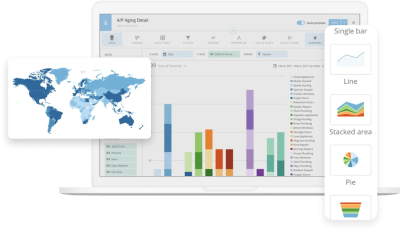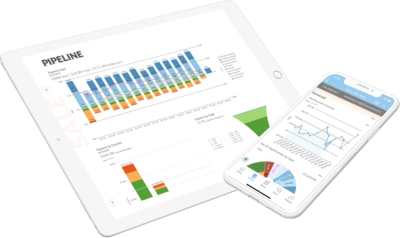How API integration can enhance data analysis and reporting
Do you find it hard to believe that API integration can have such a big impact on data analysis and reporting? In a world that is more and more driven by data, it’s no surprise that APIs are becoming increasingly popular.
An API, or application programming interface, is a set of rules and protocols that allow software programs to interact with each other. In the context of data analysis and reporting, an API can be used to collect data from a variety of sources and then analyze that data more efficiently and accurately.
There are many benefits to using an API for data analysis and reporting. Perhaps the most obvious benefit is that companies can save a lot of time and money by integrating an API into their data analysis and reporting process.
By automating the data collection process, companies can avoid hiring expensive consultants or analysts to collect data manually.
But how can using an API improve the accuracy of data analysis and reporting? This article will discuss how integrating an API into data analysis and reporting can lead to more accurate and efficient results.

What is an API?
First, let’s take a look at what an API is. An API is a set of rules and protocols that allow software programs to interact with each other. In the context of data analysis and reporting, an API can be used to collect data from various sources and then analyze that data in a way that gives you actionable insights.
API stands for “application programming interface.” An API is basically a tool that allows different applications to communicate with each other. For example, when you use a mobile app to book a hotel room, the app uses an API to communicate with the hotel’s booking system.
In the context of data analysis, APIs can be used to collect data from a variety of sources. For example, if you want to collect data about how people are using your website, you could use the Google Analytics API to automatically collect that data and then analyze it.
When it comes to data analysis, APIs can be used to collect data from a variety of sources.
How can an API be used for data collection?
An API integration can be used for data collection in a number of ways. One common use case is to use an API to collect data from multiple sources and then analyze that data in a more efficient and accurate way.
For example, if you want to collect data about how people use your website, you could use the Google Analytics API to automatically manage that data and then analyze it. Or, if you want to collect data about social media sentiment, you could use the Twitter API to collect tweets containing your brand name and then use a sentiment analysis tool to analyze the tweets.
API integration can also be used to automatically generate reports. For example, if you want to create a report about website traffic, you could use the Google Analytics API to collect the data and then use a reporting tool to automatically generate the report.
How can an API improve the accuracy of data analysis and reporting?
API integration can improve the accuracy of data analysis and reporting in a number of ways.
1. By automating the data collection process, you can avoid errors that can occur when data is manually collected.
There is always the potential for human error when data is collected manually. For example, a data analyst might misread a number or forget to include a certain piece of data in their analysis. But when data is collected automatically using an API, there is no risk of human error.
By automating the data collection process, API integration can improve the accuracy of data analysis and reporting. This lets companies avoid hiring expensive consultants or analysts to manually collect data.
2. Collecting data from multiple sources can give you a more accurate picture of what’s going on.
When you use an API to collect data from multiple sources, you can get a complete picture of what’s happening.
For example, if you want to track social media sentiment, you could use an API to collect tweets containing your brand name and then use a sentiment analysis tool to analyze the tweets. This would give you a more accurate picture of social media sentiment than if you were only tracking one social media platform.
Or if you want to track website traffic, you could use an API to collect data from multiple web analytics platforms. This would give you a more accurate picture of website traffic than if you were only tracking one platform.

3. Collecting real-time data can give you a more up-to-date picture of what’s happening.
API integration can also be used to collect real-time data, which can be useful for getting a more up-to-date picture of what’s going on.
For example, if you want to track product sales, you could use an API to collect data from an ecommerce platform in real-time. This would give you a more up-to-date picture of product sales than if you were only tracking sales data that was manually entered into a spreadsheet.
4. Using data from multiple API providers can avoid vendor lock-in.
One of the major benefits of using APIs is that it can help avoid vendor lock-in.
When you use an API to collect data from multiple sources, you’re not tied to any one vendor. This means that if one of the vendors goes out of business or raises their prices, you can easily switch to another vendor without having to re-collect all of your data.
How to create a data analysis and reporting strategy
Now that we’ve discussed some of the benefits of using an API to collect data, let’s look at how you can create data analysis and reporting strategies using your API.
1. Define your goals.
Before you start collecting data, you need to define your goals. What do you want to achieve with your data analysis and reporting?
Some common goals include:
- Tracking website traffic
- Measuring social media sentiment
- Analyzing customer behavior
- Monitoring product sales
2. Choose the right data sources.
Once you’ve defined your goals, you need to choose the right data sources. The data sources you choose will depend on your goals.
To ensure that you’re choosing the right data sources, ask yourself the following questions:
- What type of data do I need to collect?
- Where can I get this data?
- How often do I need to collect this data?

3. Set up your API integration.
After you’ve chosen your data sources, you need to set up your API integration. This involves choosing an API provider and then setting up the connection between your data sources and your analysis or reporting tool.
You will want to choose an API provider that offers a robust, well-documented API. This will make it easier to set up your integration and avoid any errors. Plus, a well-documented API will make it easier to find help if you run into any problems.
4. Start collecting data.
Once you’ve set up your API integration, you can start collecting data. Depending on your goals, you may need to collect data daily, weekly, or monthly. As you collect data, you can begin to analyze and report on it.
5. Adjust your strategy as needed.
As you collect and analyze data, you may find that you need to adjust your data analysis and reporting strategy. For example, you may decide to change the data sources you’re using or the frequency with which you’re collecting data.
By regularly reviewing your data and adjusting your strategy as needed, you can ensure that you’re getting the most out of your data analysis and reporting.
Use a powerful BI tool to better analyze and report your data
API integration can be a powerful tool for data analysis and reporting. By connecting to multiple data sources and collecting real-time data, you can get a more accurate picture of what’s going on and avoid vendor lock-in.
To get the most out of your data, you need a powerful BI tool that can help you collect, analyze, and report on your data. Your tool should allow you to connect to any data source, including APIs and provides a robust set of data analysis and reporting features.
Check out some related resources:

8 Best AI Tools for Data Visualization

Domo Ranked Exemplary in Five ISG Research Buyers Guides






